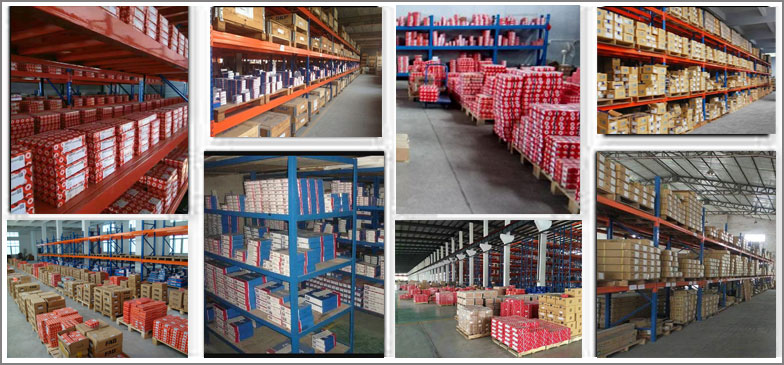Bearing common failure analysis of the situation and Precautions

We can provide free samples . Please contact Email for any inquiries
1, the contact fatigue failure
Contact fatigue failure means IKO bearings subjected to alternating stress work surface effects arising from failure. Contact fatigue spalling occurs at IKO bearing surface, often accompanied by fatigue cracks, first produced from the contact surface of the following maximum alternating shear stress, and then extended to the formation of different surface flaking shapes, such as point-like pitting or pitting as spalling , flaking into small pieces called superficial peeling. Due to the gradual expansion of flaking surfaces, but often extend to the deep, forming deep peeling. Deep contact fatigue spalling is a source of fatigue failure.
2, wear failure
Failure means the relative sliding friction and wear between the surface of the work leading to the continuous surface of the metal from wear failure. Continuous wear IKO bearing parts will cause gradual damage and eventually lead to the loss of dimensional accuracy IKO bearings and other related issues. Wear may affect the shape change, with the gap increasing and work surface morphology changes that may affect the lubricant or it reaches a certain level of pollution caused complete loss of lubrication, thus making IKO bearings and even the loss of rotational accuracy can not operate normally. Wear failure is one of the types of bearings common failure mode, press the wear is usually divided into the most common form of abrasive wear and adhesive wear.
Abrasive wear means wear squeeze IKO bearing surface between the external hard particles or hard objects or metal surfaces and debris caused by the relative movement of the contact surface, often causing abrasions shaped furrows in the bearing surface. Hard particles or foreign matter from the host may be internal or other adjacent parts from the host system by the lubricant feed IKO bearings inside. Knowledge IKO bearings precision errors. Means an adhesive wear or foreign microscopic bumps of the friction surface of the friction surface uneven force, a serious deterioration in the lubrication conditions, because of local friction and heat, could easily lead to friction surface microstructure of local deformation and friction welding, seriously when the surface of the metal may be partially melted, the contact surface of the plastic deformation increases will force local friction welding point rip from the substrate. This adhesion - tear - constitutes a cycle of adhesion adhesive wear, in general, minor abrasions called adhesive wear, adhesive wear is called a serious bite.
3, fracture failure
IKO bearing fracture failure was mainly due to two factors defects and overload. When the applied load exceeds the ultimate strength of the material and cause parts breakage called overload fracture. The main reason is the host overload sudden failure or improper installation. Bearing parts of the micro-cracks, shrinkage, bubbles, chunks of foreign matter, organizations and local overheating can cause burns and other defects in the defect at the time of fracture impact overload or excessive vibration, called the defect fracture. It should be noted, IKO bearings in the manufacturing process, the raw materials into the plant reinspection, forging and heat treatment, quality control, process control, instrumentation correct analysis by the existence of the defect, the future still need to strengthen controls. But in general, usually appears most of IKO bearings Failure overload failure.
4, clearance changes fail
IKO bearings at work, due to external influence or internal factors, with the gap so that the original change, reduced accuracy, and even lead to "bite" is called clearance changes fail. External factors such as excessive interference, the installation is not in place, the amount of expansion caused by temperature, instantaneous overload, internal factors such as residual stress and retained austenite is unstable and so is the main cause of failure of the clearance change.
If you get a good 1.IKO bearing lubrication and proper blocking debris and moisture, which means that there should be no seal wear, however, it is best when you turn on the bearing box, check the bearings and seals regularly check Check near the bearings oil seals position to ensure that they are adequate to prevent hot liquids or corrosive liquids or gases penetrate along the axis of the bearing, seal Ruoyi wear should be replaced as soon as possible.
2 High temperature often expressed IKO bearings in unusual circumstances. Temperature also harmful lubricant within the bearing. Sometimes IKO bearings overheating can be attributed to the bearing lubricant if bearing long-term operation at temperatures over 125 degrees Celsius, will reduce the IKO Bearings lifetime.
IKO bearings high temperature causes include: lack of lubrication or excessive lubrication, the lubricant contains magazines, the load is too large, IKO bearing damage, lack of space, and high-temperature friction seals and so on.
3 the operation of the machine check condition, monitoring to avoid equipment downtime.




